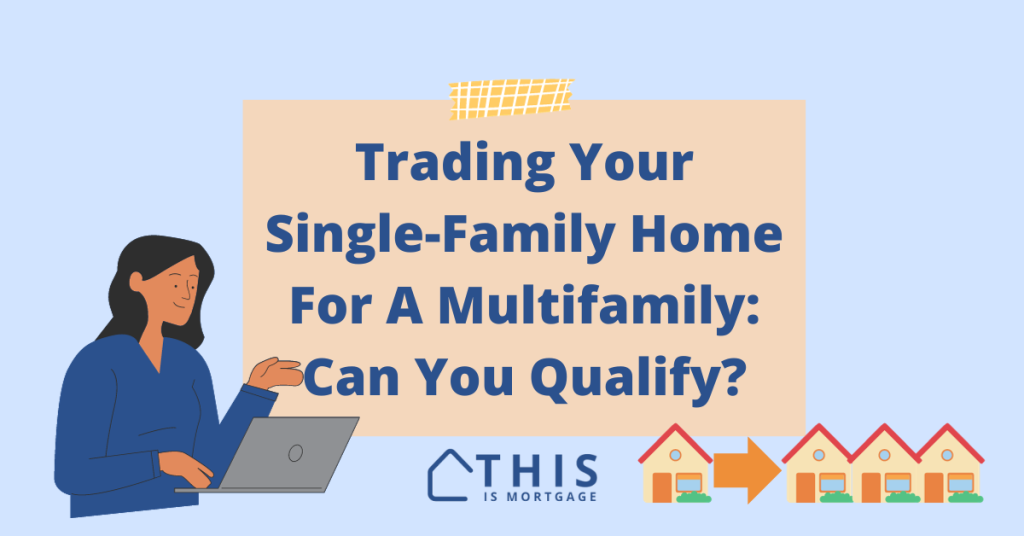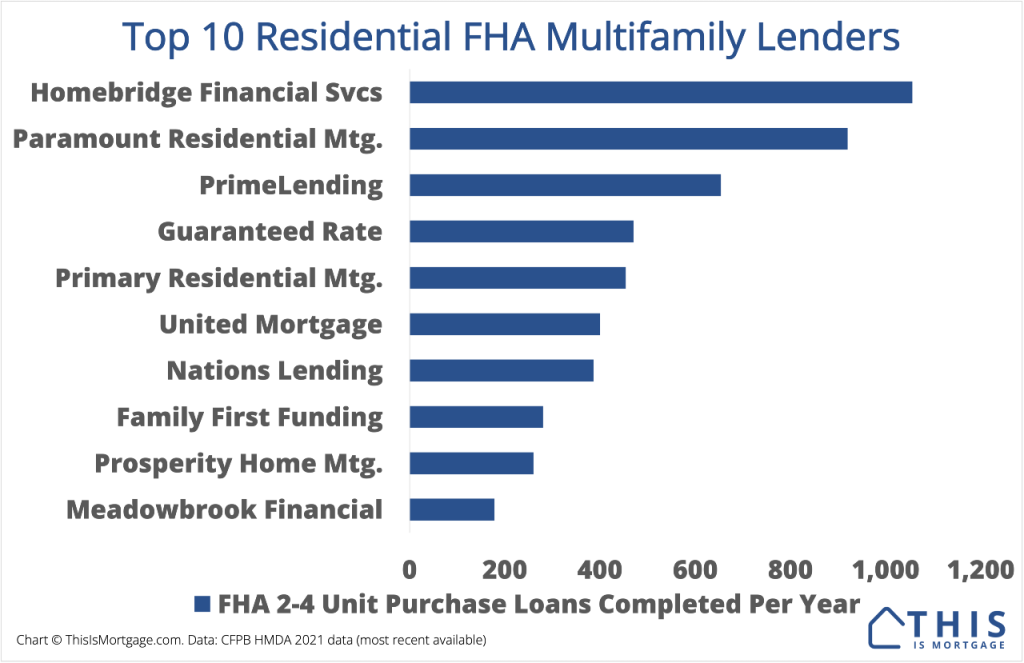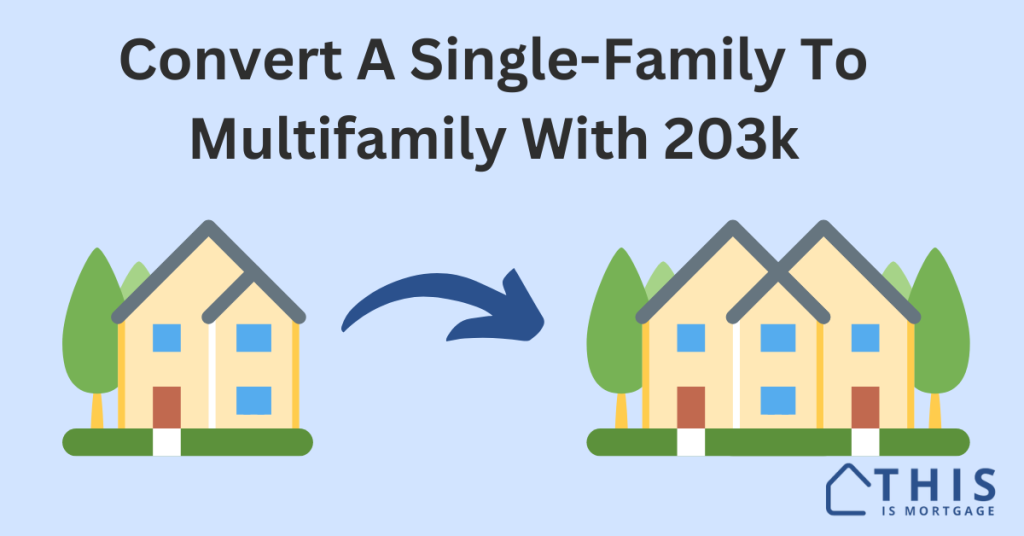Over the past 10 years, buying an owner-occupied multifamily property has become insanely popular.
And with Fannie Mae’s new 5% down multifamily program for 2-4 unit properties, it’s going to get even crazier.
This strategy, known as “house hacking” can get your foot in the door as a landlord while reducing monthly housing expenses, thanks to rental income.
But what if you own and live in a single-family home? Can you buy and move into a multifamily?
Honestly, it’s difficult, but possible. Here’s how to go about it.
Get an opinion on your scenario here.
The underwriter will suspect occupancy fraud
The major issue you will run into when moving from a single-family into a multifamily is the suspicion of occupancy fraud.
This is when buyers say they plan to live in a home but never do. This gets them lower down payments and better rates compared to buying it as an investment property.
To an underwriter, going from a single-family home to a multifamily doesn’t make sense and raises occupancy red flags. Normally, people go from apartment or communal living to a free-standing home, not the other way around.
You have to have a great reason to move
The first thing you need is a great, water-tight reason that you are moving from a single-family home to multifamily.
One viable reason is to be closer to family. Perhaps you have an aging parent for whom you need to provide care. Or you need relatives around to assist with childcare.
You will write a great letter of explanation addressing why your move is the best personal and financial decision. If you’re moving outside of commuting distance from your work, but are keeping the job, provide a remote work letter from your employer showing you can work from the new location.
So your first step before looking for multifamily properties is to examine your reasons for moving. Will the underwriter think you have a good reason to move, or are you simply acquiring an investment property on the cheap? Family reasons are a good starting point, but they are often not enough. You also have to be moving “up”.
You have to move “up”
The new multifamily property must be a step up from your single-family property. First, the underwriter will take the total square footage of the new multifamily property and divide by the number of units. This number has to be bigger than your current single-family residence.
For example, you are moving from a 1,000-square-foot single-family residence to a 4,400 square foot 4-unit. The unit you live in will be 1,100 square feet, marginally bigger than your current residence.
The underwriter will also look at the value of your current home and the multifamily. You will not be approved if you’re “moving” from a $1 million single-family residence to a $300,000 multifamily. It’s too big a step down.
As a rule of thumb, the underwriter wants to see your lifestyle improving with the move into the multifamily. Most of the time, it’s a very difficult case to argue.
Potentially valid reasons to move from a single-family to multifamily
Here’s a non-exhaustive list of potentially acceptable reasons.
- You have to relocate for work and want to live in a multifamily in the new location
- You need additional units for a family member or caretaker
- You are selling your home and want multifamily rental income to reduce housing expenses
- You’ve outgrown your single-family home and the multifamily unit you will move into is bigger (3 bedroom vs 2 bedroom, larger square footage, etc.)
- You are intentionally downsizing and reducing costs as a retirement planning strategy
There could be many more valid reasons to “step down” from a single-family to multifamily, but they must make sense to the underwriter. Be prepared to document any claims.
Get started on your multifamily home loan.
Red flags
Here’s when the underwriter will be most suspicious about your plans.
- You already own rental properties
- You plan to keep and rent out your single-family residence (the underwriter assumes you will continue living there)
- You’re buying a multifamily home down the street from your single-family home
- It’s a massive step down, such as a 5 bedroom home on three acres to a 1,200-square-foot unit in the multifamily
These and other attributes of your move could get your file denied.
When in doubt, contact a lender who can run your scenario by an underwriter for an honest opinion prior to making an offer on a home.
Selling your existing home helps
To convince an underwriter that you will move, sell your existing home or list it for sale.
This shows that you are serious about the move. You won’t secretly move back into (or never move out of) your existing residence. This is especially important if the multifamily is close to your current home.
Using rental income from the vacated property to offset the payment
Sometimes you can’t or don’t want to sell your primary home. Perhaps it has a low payment and could fetch high rents.
You are allowed to keep it as long as you can convince the underwriter that you will actually live in the multifamily.
You can use 75% of the future rental income to qualify. If you don’t have one year of landlord experience, the most you can use is the full principal, interest, taxes, and insurance (PITI) payment.
For example, your primary home PITI payment is $1,500. You can rent it for $2,500. Qualifying rent is $1,875 with one year of landlord experience, but $1,500 without.
You will need to supply:
- A signed lease agreement
- Proof the cashed security deposit check
These are Fannie Mae conventional loan rental income rules, so FHA and VA guidelines could differ. Check with your lender about your situation.
It’s possible to buy a multifamily if you own a single-family
This real estate swap is possible, but it’s not always easy. Expect prying questions from your loan officer and know he or she is just trying to prepare the file for the underwriter.
At the end of the day, approval is largely a judgment call by the underwriter. But as long as your situation makes sense, you could soon be the owner of a multifamily property.




